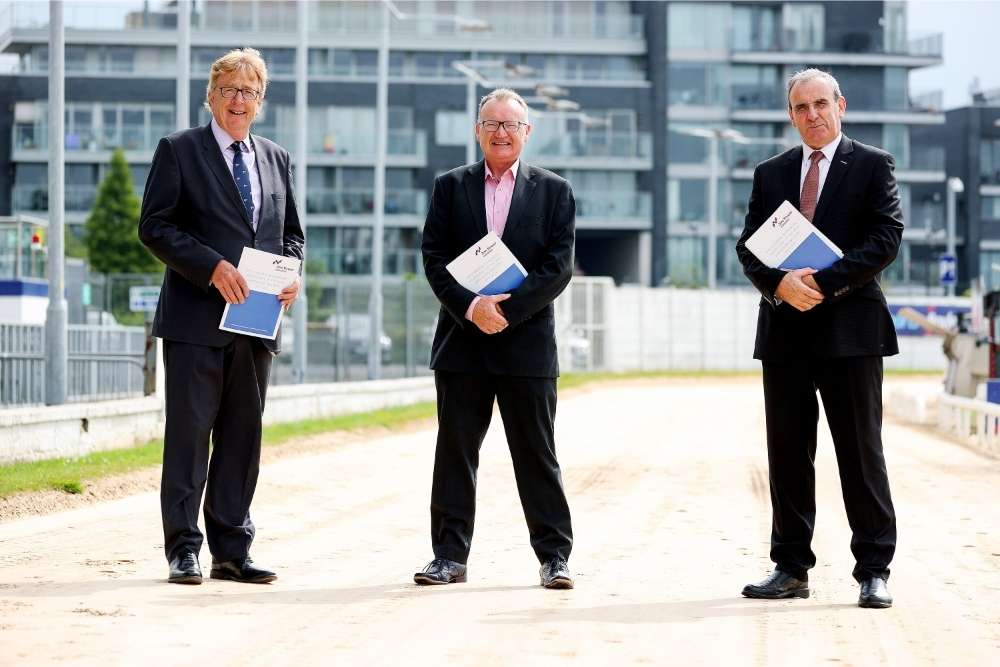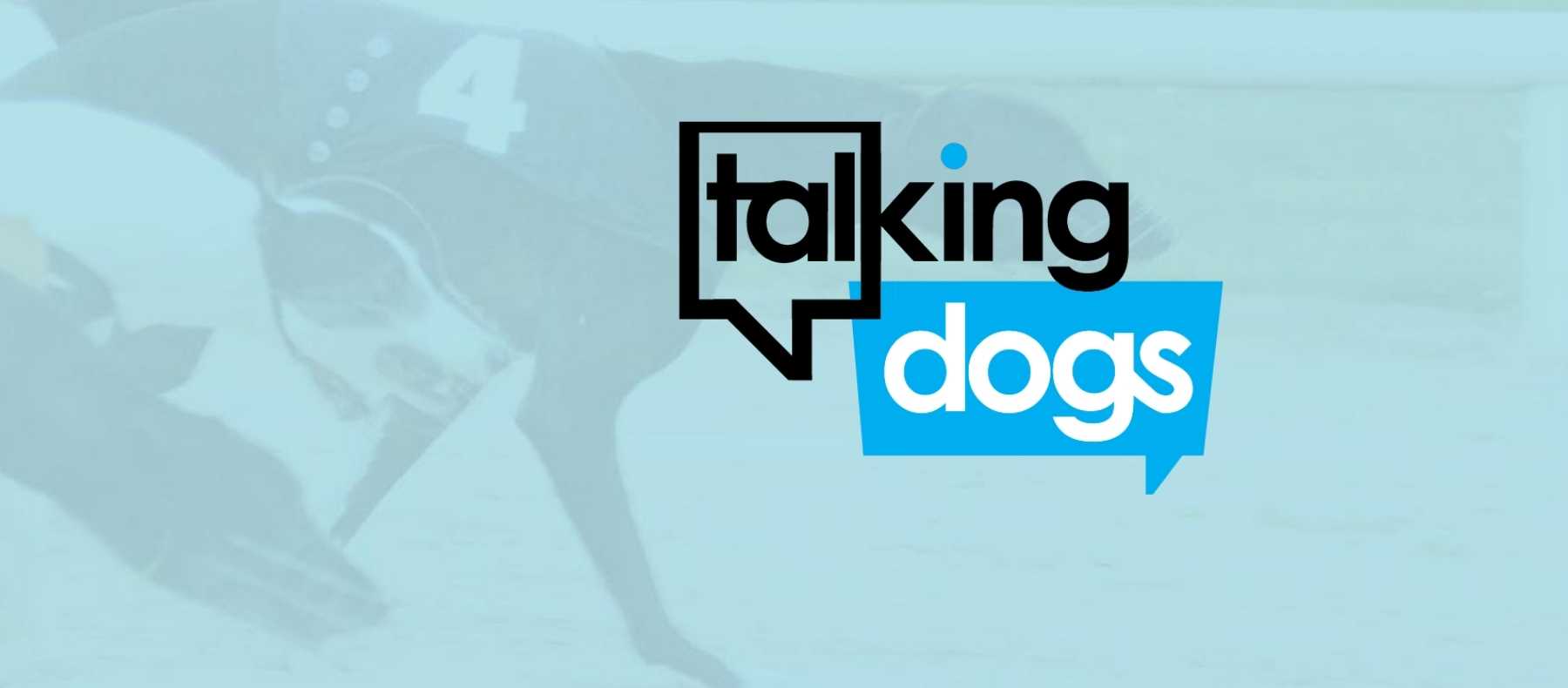REPORT HIGHLIGHTS IMPORTANCE OF GREYHOUND RACING INDUSTRY TO IRISH ECONOMY
GRI
The significant contribution made by the greyhound racing industry to the Irish exchequer and rural employment is highlighted in a new report published at Shelbourne Park, Dublin, today by Greyhound Racing Ireland (GRI).
The report, compiled by consultant economist Jim Power, shows the industry made a net contribution to the Irish economy of €132.3 million in 2019 and supported 4,150 full-time and part-time jobs. An additional 6,211 active greyhound owners derived economic benefit from the industry in 2019, the last full year of activity before the pandemic. An investment of a further €117.8 million was made by greyhound owners in 2019 in preparing and racing greyhounds.
While Covid-19 restrictions have resulted in a significant decrease in activity and revenue during 2020 and 2021, GRI expects to return to pre-pandemic activity and attendances in 2023.
The report also contains details on the care and welfare initiatives progressed by GRI during the past two years, including the provision of care and foster care centres, the introduction of an expanded inspection programme for greyhound establishments, the operation of a Greyhound Injuries Support Scheme, and the commissioning of the Rásaíocht Con Éireann Traceability System. 3,995 greyhounds also have been rehomed (2019 - 974; 2020 - 1,775; 2021 to 30 June - 1,246) with the support of GRI and the Irish Retired Greyhound Trust.
Frank Nyhan, Chairman of Greyhound Racing Ireland, commented, “The greyhound industry is going through a very challenging period, but the economic, financial, and employment contribution remains significant.”
“The challenges experienced in recent years by the industry include declining attendances, the closure of some tracks for economic reasons, Brexit and adverse publicity in relation to welfare and other practices within the industry,” added Mr. Nyhan. “The ongoing challenge for GRI is to continue the development of a commercial greyhound racing industry built on a consumer-focused, and high-quality entertainment product, which meets the highest possible international regulatory and welfare standards.”
Mr. Nyhan says COVID-19 has represented a significant challenge for the industry, but as restrictions are eased, activity levels are expected to recover.
“In 2019, 462,709 patrons attended race meetings, and it is difficult to see that total being surpassed in 2022. However, provided the public and private greyhound stadia are put on a sound commercial footing, and there is a continuance of the aggressive approach to regulating the sector it is anticipated that attendance levels will reach or exceed pre-pandemic levels in 2023,” he explained.
The report contains a county-by-county breakdown of the 6,211 active owners across the island of Ireland with Cork leading the way, accounting for 890 or 15% of the overall number followed by Tipperary (669, 11.3%), Kerry (599, 10.1%), Limerick (540, 9.1%), Wexford (314, 5.3%) and Kilkenny (286, 4.8%.) Tipperary accounts for 12.5% (50) of the 400 active trainers in Ireland followed by Cork (38, 9.5%), Kerry (34, 8.5%), Limerick (30, 7.5%), Wexford (21, 5.25%) and Tyrone (19, 4.75%).

Gerard Dollard, CEO of Greyhound Racing Ireland, says government support for the sector is “very important”, and in the absence of such support, there would be “considerable implications” for rural employment and economic activity.
In 2019 and 2020, the Department of Agriculture, Fund and the Marine paid €16.8 million to the greyhound industry through the Horse and Greyhound Racing Fund, and it increased the allocation to €19.2 million in 2021 to provide general support to the industry and to enable it deal with Covid.
“The greyhound industry is an important part of the social and economic fabric of rural Ireland. It supports considerable employment directly and indirectly down through the supply chain, and it is an important way of life for greyhound owners around the country. For stakeholders in the sector, it is an important economic and social activity,” explained Mr. Dollard.
Highlights from the Greyhound Racing Ireland report:
- - The total cost to greyhound owners each year of keeping the ‘greyhound pipeline’ in operation is around €117.79 million. This is a significant amount of expenditure, and much of it is injected into local economies and supports thousands of local jobs.
- - Wagering activity on greyhounds contributes to the overall betting levy collected by the Exchequer. This levy was increased from 1% to 2% in 2019 resulting in a return to the Exchequer of €95 million in 2019.
- - In 2019, the total prize money granted was €9.58 million, of which GRI contributed 82.4 per cent, which works out at €7.89 million. The remainder came from race entry fees and sponsorship contributions. In 2020, the total prize money granted was €6.11 million, of which GRI contributed 81 per cent, which works out at €4.95 million. Between 2006 and 2020, prize money totalling €129.9 million was paid out, with GRI contributing 74.4 per cent, which works out at €96.6 million.
- - An estimated €8 million per year was raised at greyhound meetings for worthy causes. In a post-Covid world, greyhound racing will re-establish itself as a significant vehicle for fundraising for sporting organisations such as GAA clubs and charitable causes.
- - While much has been made in media reports of withdrawal of sponsors from support of greyhound racing, this is not borne out in reality. Three sponsors withdrew from sponsorship due to targeted and significant campaigns from those opposed to greyhound racing. GRI has seen some new sponsors emerge and other sponsors are willing to continue to support the industry but have asked for a lesser public profile than heretofore.
- - An area of growth for GRI has been the sale of media rights for its greyhound racing activities. An agreement has been entered into with Sports Information Services (SIS) who transmit Irish greyhound racing to UK bookmaker outlets and international markets. The 8 meetings incorporate 2 early morning meetings (Waterford and Kilkenny) which are aimed towards the international wagering market. Total income from SIS in 2019 was €2.1M.
The report is available to view here.
